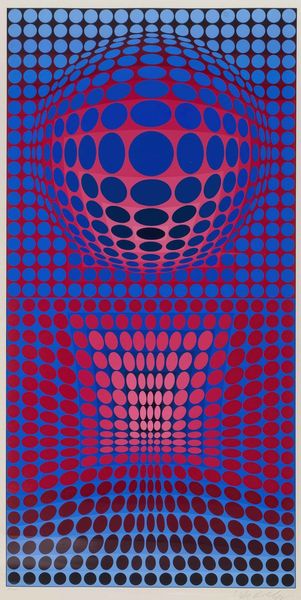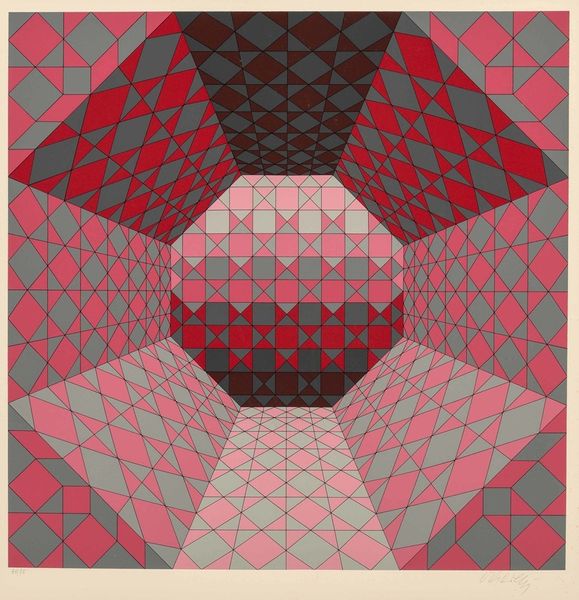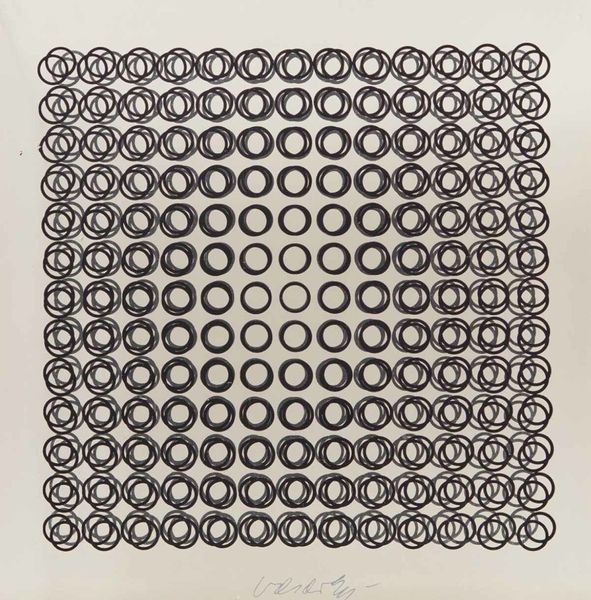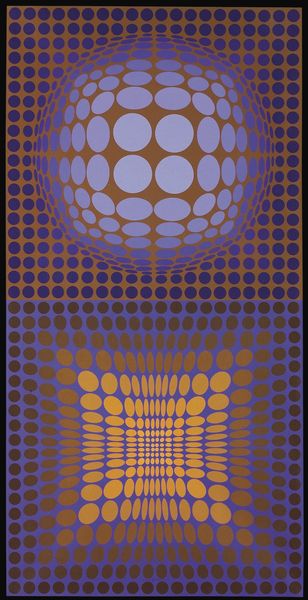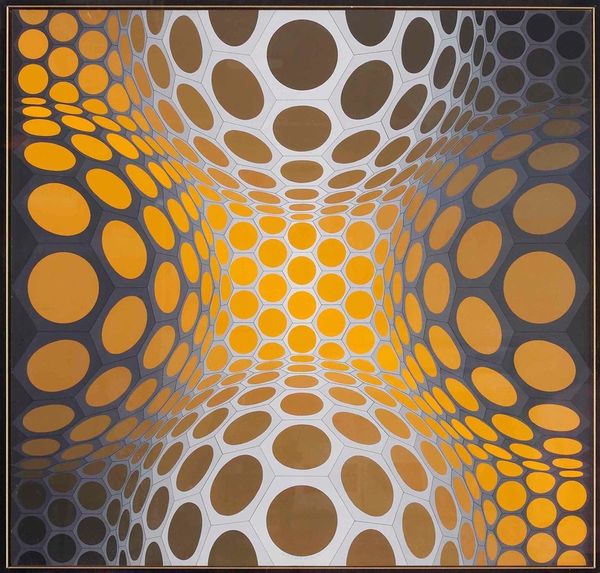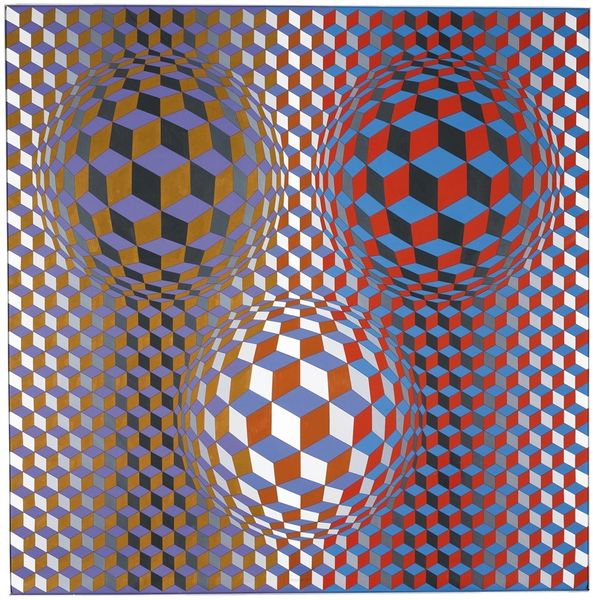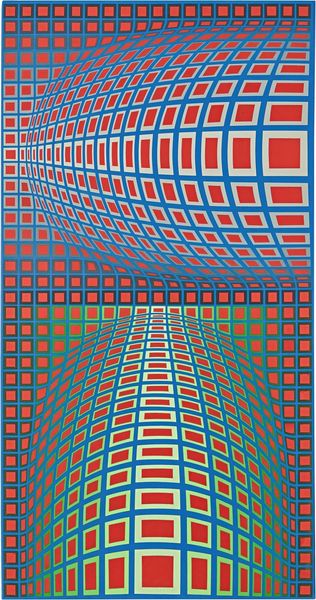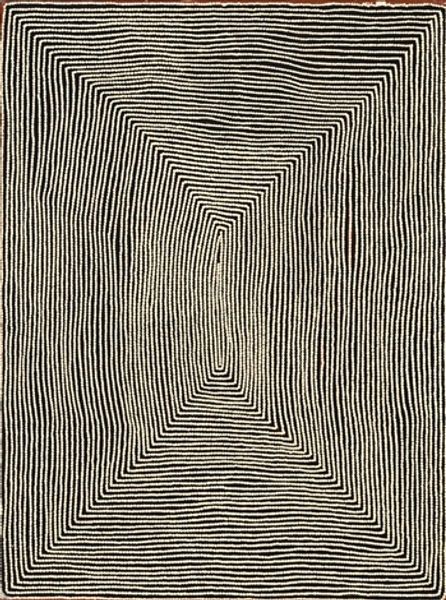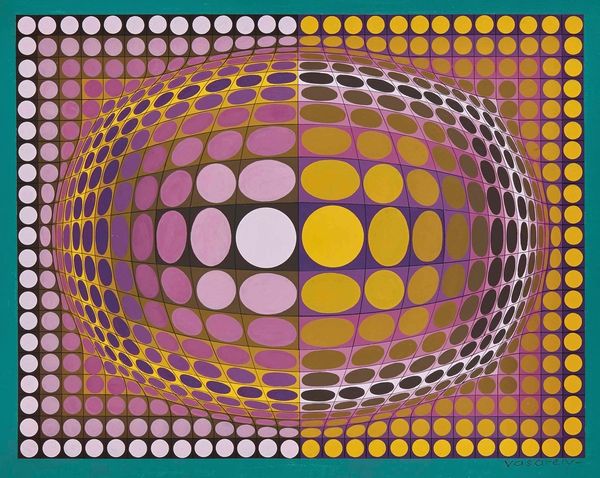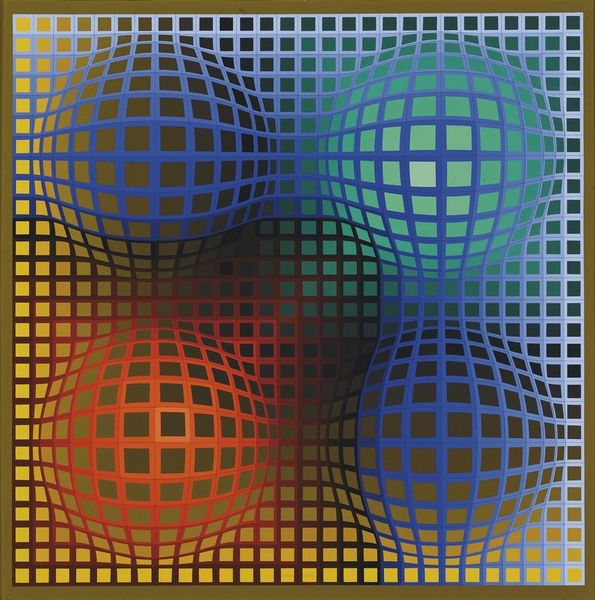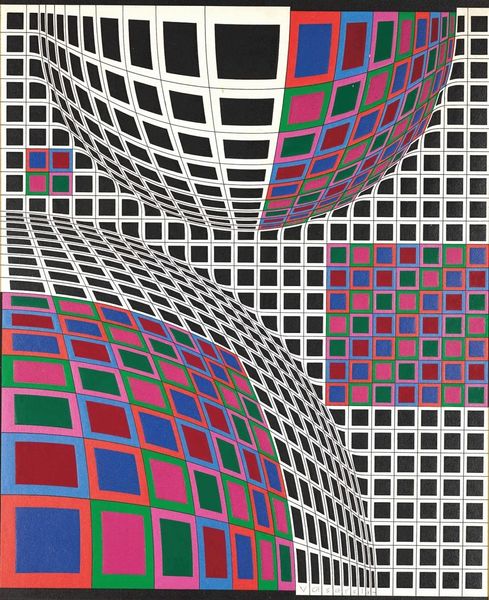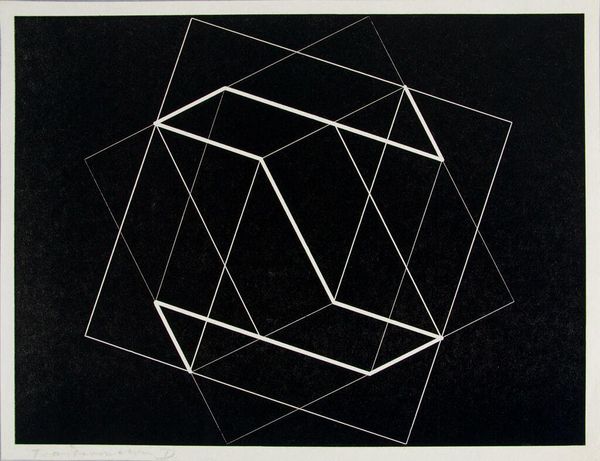
Copyright: Modern Artists: Artvee
Editor: This is Victor Vasarely’s "Meta #1" from 1976, an acrylic painting featuring geometric shapes. It's really dynamic; the shapes seem to bulge outwards, creating an optical illusion. How do you interpret this work within its historical context? Curator: Well, looking at "Meta #1," it’s important to consider Vasarely's role in popularizing Op Art. This movement, so prominent in the ‘60s and ‘70s, wasn't just about creating visually stimulating patterns. How do you think the social and cultural shifts of that era influenced its reception? Editor: I imagine the interest in space exploration and technological advancements might have played a role? The image evokes a futuristic, almost digital, sensibility, which perhaps resonated with the public's growing fascination with the future. Curator: Precisely. And remember, art institutions, galleries, and museums actively shaped the visibility and legitimization of Op Art. It became a part of a broader cultural phenomenon reflecting new approaches to perception and experience. Do you see a link to consumer culture as well? Editor: Absolutely! Its vibrant and accessible imagery aligns perfectly with Pop Art and its embrace of commercial aesthetics. But thinking about it now, do you feel this accessibility detracted from its critical reception in the long run? Curator: It's a valid point. Some critics viewed Op Art as purely decorative and lacking deeper meaning. But its lasting influence on design, advertising, and visual culture can’t be denied. How else might we consider its continued relevance today? Editor: I never considered Op art to have this much cultural context, but I understand better its role as a cultural phenomenon! Curator: Agreed! It’s through exploring art’s broader societal impact that we fully appreciate pieces like this.
Comments
No comments
Be the first to comment and join the conversation on the ultimate creative platform.
